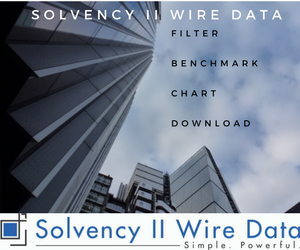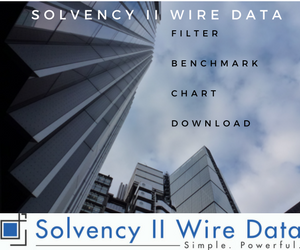Asset managers for the insurance industry are concerned about Pillar III reporting under Solvency II. They worry that the level of granularity stipulated in the annual and quarterly Quantitative Reporting Templates (unofficially QQRTs and AQRTs) could be overly burdensome, at times ineffective, and could put them on a collision course with some exiting market rules. Practitioners from the insurance and asset management industry discussed these and other concerns at the Managing Insurance Assets Under Solvency II conference held in London in September. While speakers welcomed an improvement in the quality of reporting, they said that clarity, look through and reporting timelines must be addressed
Solvency II fuzziness
A tangible sense of frustration could be noted from almost all speakers and delegates when discussing the lack of clarity and guidance on Level 2 and Level 3 texts of the reporting requirements. And all now eagerly await the public consultation on the QRTs from EIOPA in November. Bruce Porteous, Head of Solvency II Regulatory Development, Standard Life, said, “Solvency II requires data to be complete, accurate and appropriate, with the actual specific requirements not that well defined yet by the draft regulations or supervisors. This means that planning and managing this work is very challenging for everyone, including asset management providers to the insurance industry.”Look through to the underlying investment fund
Solvency II will require much more granular reporting – down to the individual line item in pooled investment funds such as mutual funds, hedge funds and securitised products. This look through approach will help assess and manage the insurer’s risk profile and the risks embedded in investment funds. Look through reporting will also be used in the calculation of the capital adequacy requirements (the SCR and MCR). Such granularity could prove challenging. Etienne Comon, Managing Director at Goldman Sachs Asset Management, told delegates how reporting for a seemingly simple product such as a money market fund (that invests in relatively liquid and safe assets) can turn into a time consuming exercise. “An insurance company that invests 5% of its assets in a money market fund will typically assume exposure to Commercial Paper (CP), Asset-Backed Commercial Paper (ABCP), Treasury bills, and repo through its fund shares. In a well-diversified fund, each of these positions may be as small as 0.05% of total insurance assets.” “Analysing each of these small positions – many of which may mature shortly after quarter end – may be demanding if we consider the level of details provided by the documentation of repo agreements or ABCP programmes, for example.” Mr Comon stressed the implications for insurers and asset managers. “Measuring the risk exposure of many such small allocations that are quite liquid and relatively safe may not justify developing a whole new internal model. The onus is on fund managers to keep their holdings as simple as possible and provide full position and risk transparency to insurance investors.” Mr Porteous agreed that, in principle, the idea of look through was a good one as it will help insurers to quantify their risks and capital requirements. “However,” he said, “what we need as an industry is an approach that is proportionate and flexible to allow for situations where there are real practical and commercial sensitivity difficulties in accessing data, or where the extra information has no material effect or use.”Tackling confidentiality
 But there are other investments where information is not as easily available, or in some cases not at all available publicly. According to Mr Comon, “At the other end of the spectrum you have more sophisticated funds that have historically provided little information about their individual holdings such as hedge funds. In order to preserve the confidentiality of their proprietary investment strategies, many hedge fund managers used to limit holdings disclosure to a high level.”
Mr Comon said alternative asset managers were beginning to respond to the reporting demands of Solvency II. “As Solvency II introduces highly granular reporting requirements, and as part of a broader trend towards more transparency, more and more alternative managers provide the type of look through information that Solvency II requires.”
But there are other investments where information is not as easily available, or in some cases not at all available publicly. According to Mr Comon, “At the other end of the spectrum you have more sophisticated funds that have historically provided little information about their individual holdings such as hedge funds. In order to preserve the confidentiality of their proprietary investment strategies, many hedge fund managers used to limit holdings disclosure to a high level.”
Mr Comon said alternative asset managers were beginning to respond to the reporting demands of Solvency II. “As Solvency II introduces highly granular reporting requirements, and as part of a broader trend towards more transparency, more and more alternative managers provide the type of look through information that Solvency II requires.”
 David Holdreith, Executive Director, Goldman Sachs Asset Management, said disclosure requirements of Solvency II pose serious challenges for fund managers. “This really does come down to a confidentiality issue. Do you demand the manager to give out the holdings on a certain pooled investment? Clearly hedge funds face a particular challenge.”
However, at the higher end of investment grade funds there was a willingness to work with insurers to meet the Solvency II data requirements, Mr Holdreith indicated. “Talking to some of our clients, and certainly at Goldman Sachs Asset Management, there is a willingness to provide the holding data on a more timely basis for the insurers, but this still remains a major challenge for reporting.”
One avenue of dealing with this problem could be constructing insurance-specific investment pools – a core part of which will be to provide the data as required by the insurance industry, Mr Holdreith added.
David Holdreith, Executive Director, Goldman Sachs Asset Management, said disclosure requirements of Solvency II pose serious challenges for fund managers. “This really does come down to a confidentiality issue. Do you demand the manager to give out the holdings on a certain pooled investment? Clearly hedge funds face a particular challenge.”
However, at the higher end of investment grade funds there was a willingness to work with insurers to meet the Solvency II data requirements, Mr Holdreith indicated. “Talking to some of our clients, and certainly at Goldman Sachs Asset Management, there is a willingness to provide the holding data on a more timely basis for the insurers, but this still remains a major challenge for reporting.”
One avenue of dealing with this problem could be constructing insurance-specific investment pools – a core part of which will be to provide the data as required by the insurance industry, Mr Holdreith added.
QRT reporting timetable on a collision course
Even if difficulties and sensitivities of data granularity are resolved, there are questions about the proposed QRT reporting timelines. Speakers expressed concern that the reporting time of the QRTs (after both quarter-end and year-end) may be at odds with the reporting timelines of the fund managers themselves. Mr Holdreith told delegates, “Basically the principle is that you have to have an equitable treatment among investors in like strategies, meaning that all investors must get the holding information at the same time. Disclosing information to the insurance industry earlier is at odds with this principle.” The current Solvency II proposal stipulates that once the transitional measures end, QQRTs will have to be submitted five weeks after quarter end and AQRTs, 14 weeks. In addition, the regulator could demand more frequent reporting under special circumstances.Who owns the data?
Mr Louanges also raised the question of ownership of the data and reporting. “It is unclear which data source will be used to calculate the Solvency II compliant capital charge calculations. Would the data provided by asset managers, particularly regarding pooled funds, suffice or should there be an approval process, involving custodians or external financial services providers, in terms of data quality? These questions are yet to be answered.” The consensus expressed at the conference was that more work had to be done to ensure that reporting requirements we effective. Mr Porteous said, “The worry is that we will end up with reporting and disclosures that require disproportionate amounts of work and are inappropriately costly relative to their value and that this will be to the detriment of the insurance consumer. We must avoid excessive amounts of detailed reporting and disclosures that have no natural audience or use.” —- The Marcus Evans Managing Insurance Assets Under Solvency II conference was held in London 26-28 September 2011. Click here for full events listing. ]]>
]]>




